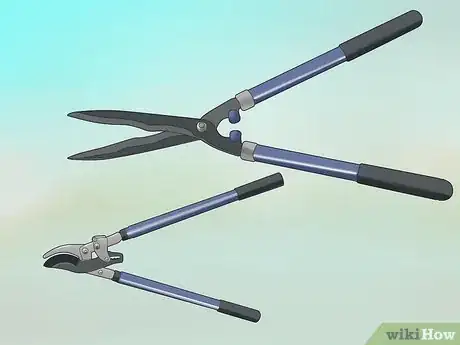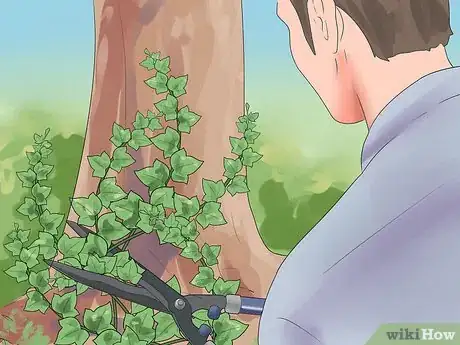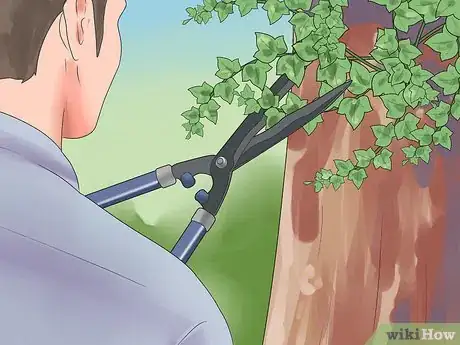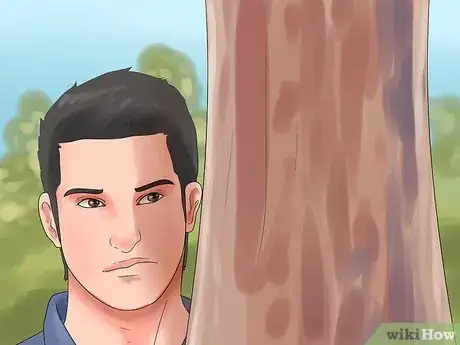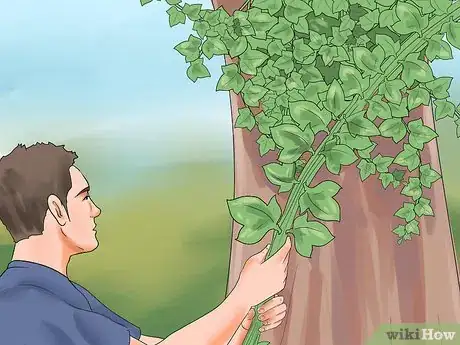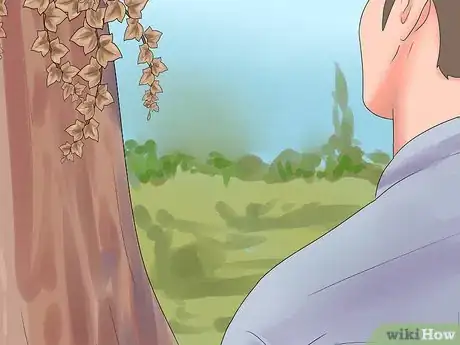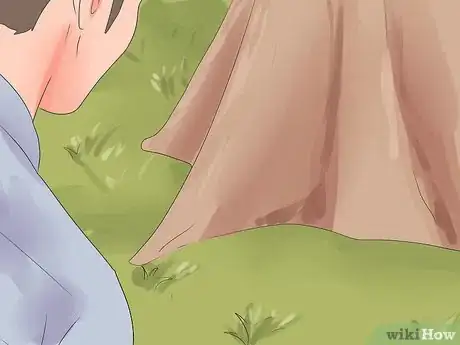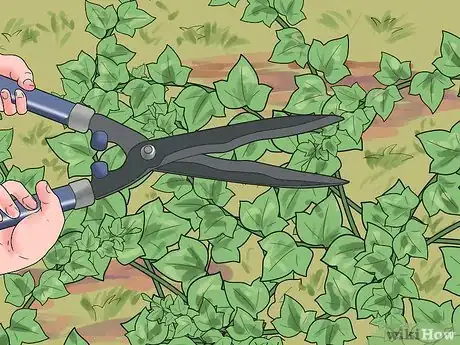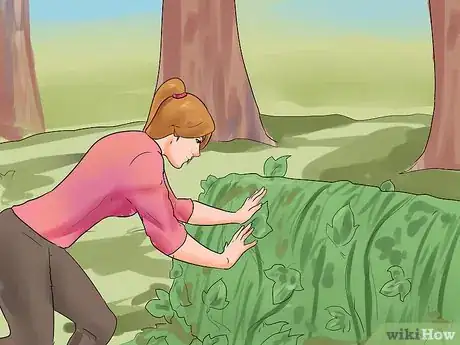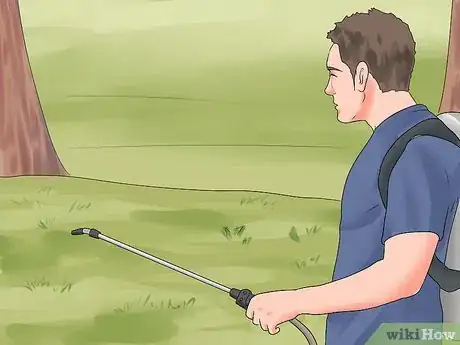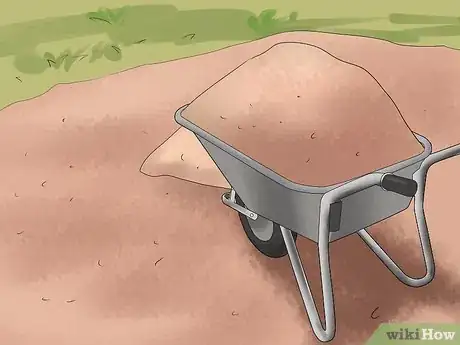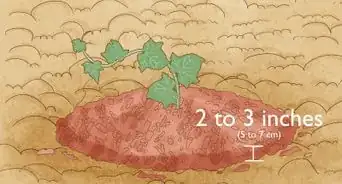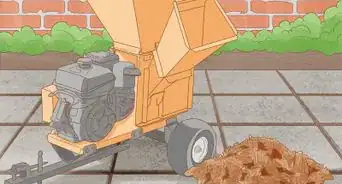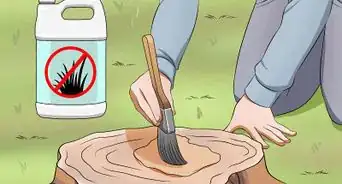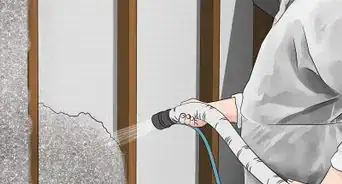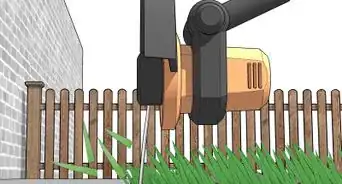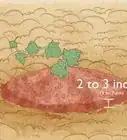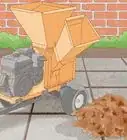This article was co-authored by Andrew Carberry, MPH. Andrew Carberry is a Food Systems Expert and the Senior Program Associate at the Wallace Centere at Winrock International in Little Rock, Arkansas. He has worked in food systems since 2008 and has experience working on farm-to-school projects, food safety programs, and working with local and state coalitions in Arkansas. He is a graduate of the College of William and Mary and holds a Masters degree in public health and nutrition from the University of Tennessee.
There are 8 references cited in this article, which can be found at the bottom of the page.
wikiHow marks an article as reader-approved once it receives enough positive feedback. This article received 18 testimonials and 88% of readers who voted found it helpful, earning it our reader-approved status.
This article has been viewed 582,758 times.
English ivy may be pleasing to the eye, but when it quietly creeps across the ground and up trees and buildings, it can leave extreme damage in its wake. The small, suction cup-like "holdfasts" with which ivy attaches to vertical surfaces are strong enough to rip off chunks of bark or paint. Killing ivy without causing further damage to your property requires cutting the vines, rolling them back and mulching them to make sure they won't take root again.
Steps
Killing Ivy on Trees
-
1Get your equipment ready. The most important tool you'll need in order to kill ivy is a sharp pair of clippers or loppers, depending upon the thickness of the vines. Older vines can grow as thick as one's arm, while newer vines are as thin as flower stems. In addition to gathering appropriate cutting supplies, put on a thick pair of gardening gloves to protect your hands as you pull the ivy back.[1]
-
2Cut the vines around the base of the tree. One by one, walk around the tree and cut through every vine growing up the tree at ankle height.[2] Even one remaining uncut vine can nourish the ivy further up the tree, so it's important to make sure no vine is left behind.
- For very old, thick vines, use a handsaw to carefully saw through the vine.
- As you work, be careful not to make cuts on the tree itself. Ivy weakens trees and makes them more susceptible to disease. Cutting through the bark could cause further damage.
Advertisement -
3Cut another circle around the tree at shoulder level. Use the same technique to cut all the vines again. This time, pull the cut sections of vines gently from the tree as you go. By making two cuts and pulling away the section of ivy at the bottom of the tree, you're blocking the vines higher up the tree from getting essential nutrients, and they'll soon die. Put the cut vines in a pile, then mulch them later so they won't take root again.[3]
- As you pull the cut vines from the tree, be careful not to remove too much bark with the holdfasts.
- The same method works for removing ivy from outdoor walls.
-
4Examine the tree trunk for uncut vines. Take a close look to make sure no vines were left uncut. Cut and remove any you happen to find, taking care not to damage the bark.
-
5Cut away the ivy on the ground. If the tree is surrounded by a mat of ivy on the ground, you'll need to remove the ivy from the ground and control its growth so that it won't climb back up the tree. Removing a donut-shaped mat of ivy from around the base of the tree is sometimes referred to as a "lifesaver" cut.[4] Here's how to do it:
- Start by cutting a line through the ivy along the ground, from the base of the tree to a distance 4–6 feet (1.2–1.8 m) away. Cut several more lines radiating from the tree. Cutting the ivy into sections will make it easier to remove.
- Make a cut that connects all the lines 4–6 feet (1.2–1.8 m) from the base of the tree.
- Start pulling up the mats of ivy section by section. Keep removing ivy until you've cleared the area around the base of the tree such that no ivy reaches within 4–6 feet (1.2–1.8 m) of it.
-
6Wait for the ivy to die. Now that you've cleared the base of the tree, the ivy growing above shoulder height will begin to shrivel and turn brown. Do not attempt to cut away or pull off vines that have grown above your shoulders. Yanking off the holdfasts will pull away the tree's bark, leaving it susceptible to disease. The dead ivy will look unattractive at first, but eventually the leaves will fall away and it will become less noticeable.
-
7Monitor the area for new ivy growth. After you've taken these measures, check back every few weeks to make sure new ivy isn't crawling in the vicinity of the tree. When you find some, cut it away.
Killing Ivy on the Ground
-
1Cut the ivy into sections. Cut lines through the ivy along the ground in order to divide it into large sections.[5] This will make it much easier to remove the ivy from the ground. Pull the sections apart from one another as you cut. Work carefully around plants and saplings you want to keep.
- If you're working on a hill, cut vertical lines from the top of the hill to the bottom to create sections that you can roll downhill.
-
2Roll the sections off the ground. Lift the edge of one section of ivy and roll it forward on top of itself.[6] Keep rolling the ivy forward until the entire section has been rolled up into a big log of ivy. Move the log to a separate area and continue rolling up sections until you've cleared the area.
- Mulching the ivy rolls is the best way to dispose of them and ensure they won't take root in the area again.
-
3Use herbicides as an alternative. English ivy is difficult to kill with herbicides alone because the plant's leaves contain a waxy barrier that is difficult for products to penetrate. Therefore, the most effective method is to combine manual removal with the use of a herbicide.[7] Glyphosate is the chemical that works most effectively to kill English ivy.[8]
- Please note: The WHO considers glyphosate to be a probable human carcinogen. Its use is prohibited in some states and countries. Please check with your local laws and use caution if handling this chemical.
- Spray the area of ivy you wish to kill, but be careful the glyphosate doesn't reach other plants you want to keep.
- Herbicides are slow-acting, and must be reapplied every six weeks or so.
-
4Use mulch to contain ivy you want to keep. If you have a patch of ivy you want to preserve, but you'd like to prevent it from spreading, you can use mulch to keep it contained.[9] Simply cover the border of the ivy you want to keep with several inches (about 7 to 8 inches) of shredded or wood chip mulch. You will need to give this method some time; leave the mulch on the ivy for at least 2 seasons. You may need to add new mulch one or more times during a growing season.
- Another option is to trim the ivy back to contain it. Use a weed eater or edging tool to cut the vines along the border.
Expert Q&A
Did you know you can get expert answers for this article?
Unlock expert answers by supporting wikiHow
-
QuestionMy soil is full of ivy roots. How can I get rid of them?
 Andrew Carberry, MPHAndrew Carberry is a Food Systems Expert and the Senior Program Associate at the Wallace Centere at Winrock International in Little Rock, Arkansas. He has worked in food systems since 2008 and has experience working on farm-to-school projects, food safety programs, and working with local and state coalitions in Arkansas. He is a graduate of the College of William and Mary and holds a Masters degree in public health and nutrition from the University of Tennessee.
Andrew Carberry, MPHAndrew Carberry is a Food Systems Expert and the Senior Program Associate at the Wallace Centere at Winrock International in Little Rock, Arkansas. He has worked in food systems since 2008 and has experience working on farm-to-school projects, food safety programs, and working with local and state coalitions in Arkansas. He is a graduate of the College of William and Mary and holds a Masters degree in public health and nutrition from the University of Tennessee.
Food Systems Expert
-
QuestionWill hot composting kill ivy?
 Community AnswerNo. It will grow roots and spread where you use the compost. It is best to bag it and place it in the garbage.
Community AnswerNo. It will grow roots and spread where you use the compost. It is best to bag it and place it in the garbage. -
QuestionHow do I kill the roots of an Ivy plant?
 Community AnswerApply clear plastic solarization and/or heavy/thick mulching. Keep mulch away from the tree base/trunk section at the ground level because it still needs air flow and light to prevent mold/fungus/rot.
Community AnswerApply clear plastic solarization and/or heavy/thick mulching. Keep mulch away from the tree base/trunk section at the ground level because it still needs air flow and light to prevent mold/fungus/rot.
Warnings
- Do not add ivy cuttings or roots to a compost pile. This will likely cause it to grow and spread to areas where you use the compost.⧼thumbs_response⧽
- Wear goggles to protect eyes from debris and snapping ivy.⧼thumbs_response⧽
- Be especially careful when cutting or pulling the vine off trees because you can damage the tree bark, exposing the tree to invasive organisms or pests which could harm or kill the tree.⧼thumbs_response⧽
- Do not mess around with sharp and potentially dangerous tools. You may injure yourself.⧼thumbs_response⧽
Things You'll Need
- Pruning shears
- Protective gloves
- Protective goggles
- Shovel
- Rake
- Disposable garden bags
- Mulcher or mower
- Herbicide
References
- ↑ https://treestewards.org/take-ivy-off-trees/
- ↑ http://www.portlandoregon.gov/parks/article/201781#Ivy Removal Methods
- ↑ https://extension.oregonstate.edu/gardening/techniques/ivy-removal-home-landscape
- ↑ https://wmswcd.org/wp-content/uploads/2015/06/Manual-Ivy-Removal-Methods.pdf
- ↑ https://www.bobvila.com/articles/how-to-kill-ivy/
- ↑ https://www.bobvila.com/articles/how-to-kill-ivy/
- ↑ https://hgic.clemson.edu/factsheet/english-ivy-control/
- ↑ http://homeguides.sfgate.com/english-ivy-circling-tree-kill-tree-69358.html
- ↑ https://www.mcall.com/business/real-estate/mc-garden-creeping-ground-ivy-control-20150410-story.html
About This Article
If you need to kill English ivy on a tree, use a sharp pair of garden clippers to cut the vines around the base of the tree, then cut the vines again at about shoulder height. For very old, thick vines, use a handsaw and carefully saw through the vine. Wearing gardening gloves, pull the ivy vines away from the trunk of the tree, pulling gently so you don’t strip too much bark away from the tree. If there is a mat of ivy growing along the ground, cut it away as well so it doesn’t grow back up the tree. For tips from our gardening reviewer on killing ivy that is growing on the ground, read on!
